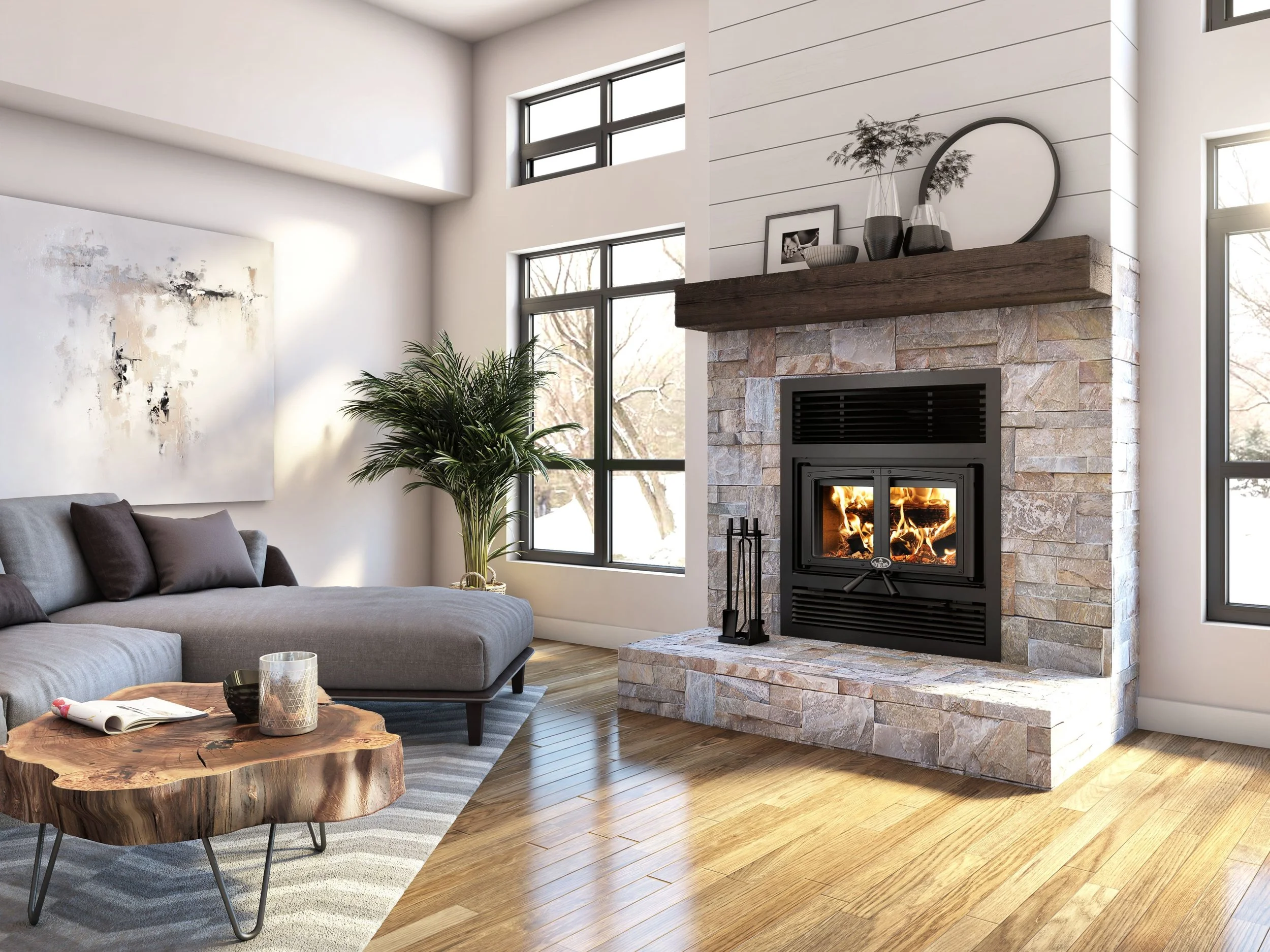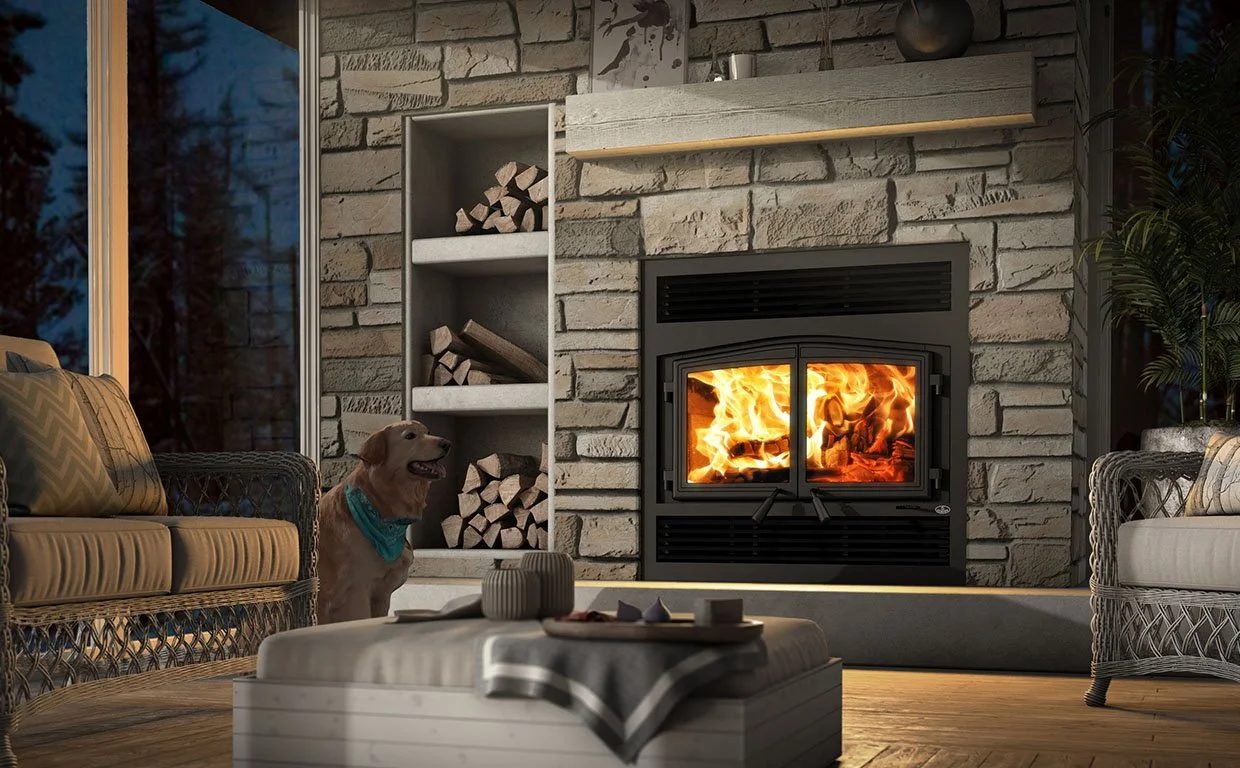Wood Fireplace Sales and Installation
When considering a wood-burning fireplace, it's crucial to think about safety, efficiency, maintenance, and the overall experience. Factors like proper ventilation, the type and quality of wood, and the need for regular cleaning are paramount. Understanding the heating capacity and potential environmental impact are also important considerations.
-
Before diving into the world of wood-burning fireplaces, it’s vital to determine its primary role in your home. Will it be the central heating source, providing warmth during the frosty winter months?
Or are you looking for an aesthetic addition that adds charm and ambiance to your living space? A centrally located fireplace can disperse heat more uniformly, making it ideal for primary burning.
On the other hand, peripheral placements, such as in a corner or along a wall, might be more about the aesthetic appeal or creating a cozy nook.
Also, consider whether you’re looking for an indoor focal point or an outdoor gathering spot, as each requires different considerations in terms of design and installation.
-
Seasoned Wood: Use wood that has been properly seasoned (dried) for at least six months to improve burning and reduce smoke.
Chimney Sweeping: Schedule regular chimney cleanings (at least annually) to remove creosote buildup, which can cause chimney fires.
Regular Cleaning: Clean the firebox and glass (if applicable) regularly to maintain efficiency and appearance.
Catalytic Combustors: If your fireplace has one, ensure it's inspected and cleaned regularly.
Heating Capacity: Choose a fireplace that matches the size of the room you want to heat.
-
Ventilation: Ensure proper airflow to prevent carbon monoxide buildup. This includes checking the damper and ensuring it's fully open before starting a fire.
Carbon Monoxide Detectors: Install and regularly test carbon monoxide detectors near the fireplace.
Fireplace Screen/Doors: Use a screen or doors to prevent sparks from escaping and potentially igniting nearby materials.
Ash Removal: Remove ashes regularly, especially from flat-bottom fireboxes.
Proper Wood: Use seasoned or kiln-dried hardwood, as softwood and green wood can create more smoke and creosote.
-
Cast Iron - Renowned for its heat-retention capabilities, cast iron is a classic choice that provides durability and even heat distribution, warming up rooms long after the fire has diminished.
Steel - Offering a sleek, modern appearance, steel fireplaces are not just about aesthetics. They heat up quickly and are known for longevity, although they might not retain heat as long as cast iron.
Stone - A timeless material, stone fireplaces exude elegance and rustic charm. Not only are they visually appealing, but they also offer exceptional heat retention.
Brick - Tried and true, brick fireplaces are both functional and versatile. They hold heat well and can be styled from traditional to contemporary based on mortar treatment and layout.
Wood Fireplaces
Contact TrueHeat About A Wood Fireplace Today
TrueHeatFC@gmail.com
(204) 741-0347 Jason | (204) 483-0592 Adam
Souris, Manitoba




